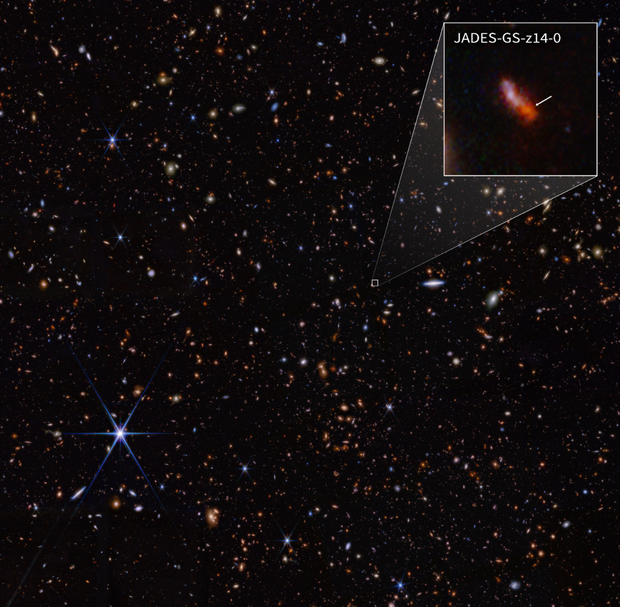NASA’s James Webb Space Telescope has spotted the oldest and most distant galaxy known to researchers, according to a space agency press release.
The galaxy was discovered as astronomers and scientists were studying what is known as the “Cosmic Dawn,” or the era just after the Big Bang when the first galaxies were formed. The first galaxies can tell researchers about how gas, stars and black holes formed and changed when the universe was very young, NASA said, and this first galaxy provides an even more unique insight.
The galaxy was observed just 290 million years after the Big Bang. Researchers have already found hundreds of galaxies about 650 million years after the event. This distant galaxy was first observed in early 2023 and photographed in October of that year. In January 2024, a camera on the James Webb Space Telescope spent ten hours observing the galaxy, known as JADES-GS-z14-0.
Scientists discovered that the galaxy had a redshiftor wavelength of light, which showed how far it was from Earth.
NASA, ESA, CSA, STScI, Brant Robertson (UC Santa Cruz), Ben Johnson (CfA), Sandro Tacchella (Cambridge), Phill Cargile (CfA)
“Seeing this spectrum was incredibly exciting for the entire team,” said Stefano Carniani of the Scuola Normale Superiore in Pisa, Italy, and Kevin Hainline of the University of Arizona in the NASA press release. “This discovery was not just a new distance record for our team; the most important aspect of JADES-GS-z14-0 was that, at this distance, we know this galaxy must be intrinsically very luminous.”
The researchers were able to determine that the light source seen by the telescope is more than 1,600 light-years in diameter, proving that it comes from “young stars” and not a black hole. The amount of starlight seen, Carniani and Hainline said, “implies that the galaxy is several hundred million times the mass of the Sun.”
Some of the light seen in the galaxy is reddened by dust, and instruments on the James Webb Space Telescope have detected wavelengths that indicate the presence of strong emissions from ionized gases, including hydrogen and oxygen. The presence of oxygen “is a surprise and suggests that multiple generations of very massive stars had already lived before we observed the galaxy,” said Carniani and Hainline.
Scientists said it’s possible that other researchers will detect even more luminous galaxies using the James Webb Space Telescope. These galaxies may be even older in the Cosmic Dawn and teach astronomers about the foundation of the universe.
po noticias
entretenimento ou entreterimento
esporte net vip com br
logos gratis
fernanda lobo
logotipo instagram
escudo flamengo png























